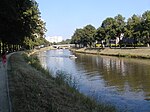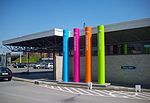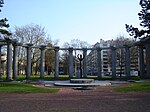Spanjaardenkasteel
Belgian castle stubsBuildings and structures in GhentCastles in BelgiumCastles in East FlandersCharles V, Holy Roman Emperor ... and 3 more
Demolished buildings and structures in BelgiumFortifications in Spain and its EmpireTourist attractions in Ghent

The Spanjaardenkasteel ("Spaniards' Castle") was a castle in the city of Ghent in present-day Belgium. The castle was commissioned in 1540 by the Holy Roman Emperor and Spanish king Charles V after he crushed a rebellion by the city. The castle housed a garrison of about 2,500 men. The castle was eventually demolished in the 19th century.
Excerpt from the Wikipedia article Spanjaardenkasteel (License: CC BY-SA 3.0, Authors, Images).Spanjaardenkasteel
Spanjaardstraat, Ghent
Geographical coordinates (GPS) Address Nearby Places Show on map
Geographical coordinates (GPS)
| Latitude | Longitude |
|---|---|
| N 51.0542 ° | E 3.7372 ° |
Address
Spanjaardstraat
9000 Ghent (Ghent)
East Flanders, Belgium
Open on Google Maps








